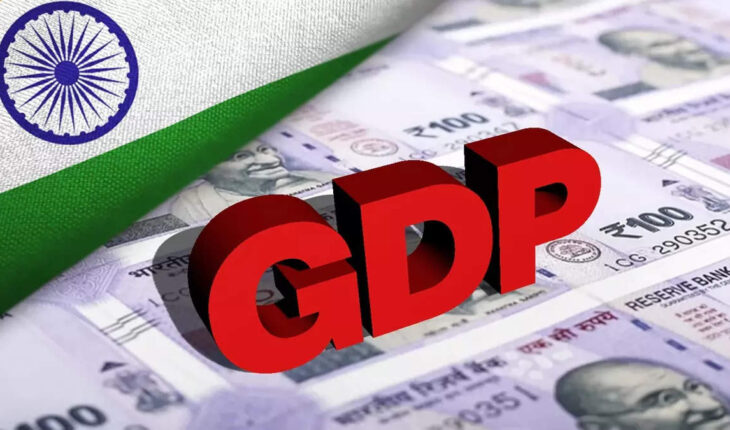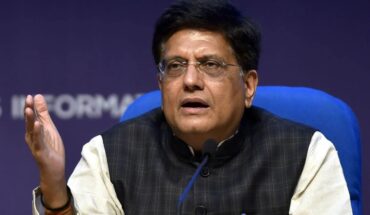The Gross Domestic Product (GDP) figures in the first quarter of the year 2023 are better than the forecasts of all economists, the Reserve Bank of India, and the government. In December 2022, the Monetary Policy Committee (MPC) had predicted GDP to be 4.2 percent in the last quarter of the financial year 2022-23, but it stood at 6.1 percent. Due to the improvement in the GDP growth rate in the fourth quarter of the financial year 2022-23, the growth rate of the entire financial year has also been improved. In the first financial year 2022-23, the MPC had estimated 6.8 percent of GDP, which in reality is 7.2 percent.
In the quarter under review, the growth rate in the agriculture sector has been recorded at 5.5 percent, in the hotel industry at 9.1 percent and in the construction sector at 10.4 percent. If seen, these three sectors have made a special contribution in improving the growth rate of GDP.
Along with the increase in GDP, investment and consumption are also seeing a boom. In the first quarter of the year 2023, an increase of 18.3 percent in investment rate and 13.4 percent in consumption was recorded. The main reason for the increase in investment is the “Production-Linked Incentives” (PLI) scheme of the government. Due to this scheme, businessmen got special help to get out of difficult times during the Corona period.
Inflation also has a negative impact on the GDP growth rate. Inflation had remained at a high level continuously for the past years, but now the inflation is coming down. In the first month of the first quarter of the financial year 2023-24, the retail inflation rate decreased to 4.70 percent in April, which was 5.66 percent in March 2023. Inflation has registered a decline for the third consecutive month and has reached an 18-month low. Economic activities are picking up due to reduction in inflation. People have started spending, due to which consumption is increasing.
The fiscal deficit of the central government in the financial year 2023 was Rs.17.33 lakh crore, which is 6.4 percent of the GDP. This is Rs.22,188 crore short of the revised target of Rs.17.55 lakh crore. Earlier the target of fiscal deficit was kept at Rs.16.61 lakh crore, which was later increased.
There are many reasons for the improvement in the economy. During the year 2022, a significant increase in the production of vehicles, which includes both personal and passenger vehicles, was recorded. Air and rail travel has increased during this period. The steel and cement sectors have also strengthened. The banking sector is continuously improving. On one hand the NPA of banks is decreasing and on the other hand their profits are increasing. In the financial year 2022-23, almost all government and private banks have registered a tremendous increase in profits.
Due to the negative impact of the Corona pandemic, the manufacturing sector grew at a mere 1.3 per cent in the financial year 2022-23, but the agricultural sector grew at 4 per cent. It is noteworthy that the growth rate of other sectors of the economy was also better than the manufacturing sector during this period.
An analysis of the last 4 years’ data reveals that the agriculture sector has registered a growth of over 19 per cent, while the manufacturing sector has registered a growth of 13 per cent during this period. However, despite the strong growth in the agriculture sector, there has been a decrease in rural demand, which may be due to the severe deterioration of the economic condition of the villagers due to the Corona pandemic. Despite this, in the March quarter of FY 2022-23, the size of agriculture exceeded manufacturing by 25 percent, which used to be similar in size earlier at current prices.
In the financial year 2023, a 6 percent increase in India’s exports has been registered. Total exports during this period stood at $447 billion, while imports grew by 16.5 percent to $714 billion. However, in the March quarter of the financial year 2022-23, imports registered a decline of 4.1 percent, due to softening of crude oil prices in the international market and a decrease in demand for various products due to sluggishness in the economy. At the same time, the trade deficit was reduced by 61 percent, from $ 26.3 billion to $ 10.1 billion, due to a significant increase in exports. If seen, in the last quarter of the financial year 2023, due to this also the GDP growth rate was fast. It contributed about 1.5 percent to the economic growth during this period. In the last quarter of the financial year 2022-23, the value of rupee also remained stable, which gave relief from inflation and ease of import of essential products.
GST collection of Rs 1,57,090 lakh crore was done in May 2023, while GST collection of Rs 1,40,885 lakh crore was done in May 2022. In this way, an increase of 12 percent has been recorded in GST collection on year-on-year basis. At the same time, in April 2023, GST collection of Rs 1.87 lakh crore was done.
According to data from the Centre for Monitoring Indian Economy (CMIE), the unemployment rate increased to 8.11 percent in April 2023, which was also 8.11 percent in December 2022, while it was 7.8 percent in March 2023. The unemployment rate in urban areas increased to 9.81 percent in April, while it was 8.51 percent in March 2023. However, in rural areas, this rate decreased from 7.47 percent in March 2023 to 7.34 percent in April. It is clear from the CMIE data that the economy remained strong in the March quarter of the financial year 2022-23 and that is why the unemployment rate was low during this period.
It can be said that the Indian economy is continuously improving. The latest figures of GDP, investment, consumption, and inflation are very positive. The acceleration in the growth rate of agriculture sector is very pleasant. With the improvement in the condition of agriculture, employment opportunities will also increase, and the economic condition of the villagers will also improve. This will also strengthen the concept of inclusive development of the country. However, the decline in the growth rate of the manufacturing sector cannot be taken as a good sign. This sector has contributed significantly in ensuring the development of the country, but the performance of this sector has not been good in the past months, which needs to be improved.






